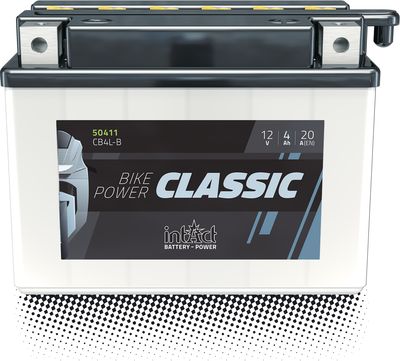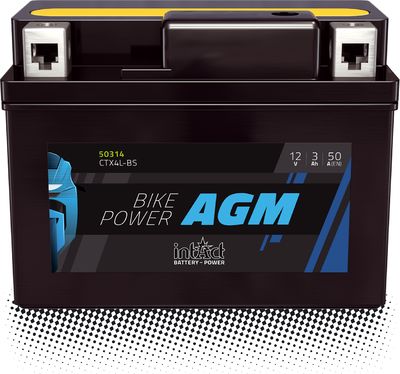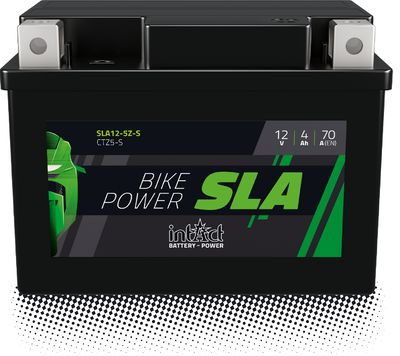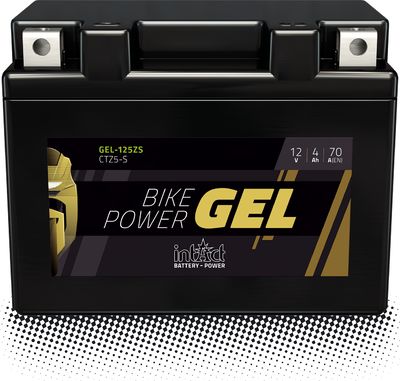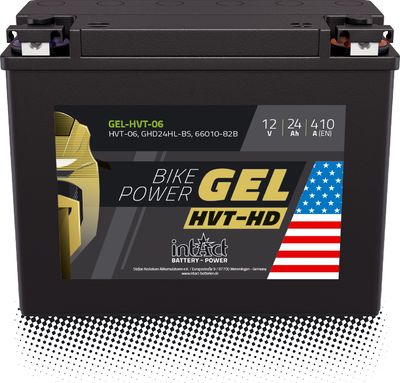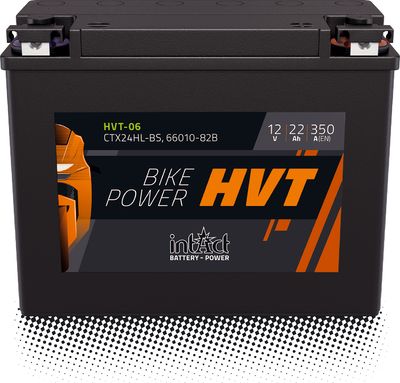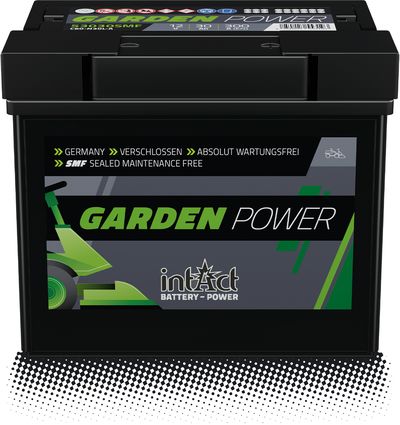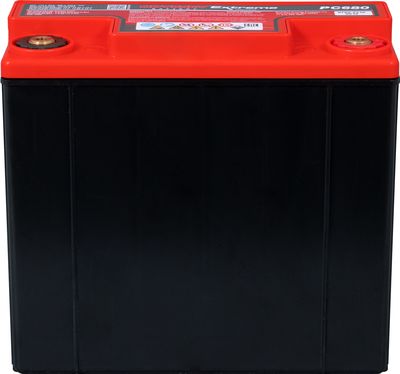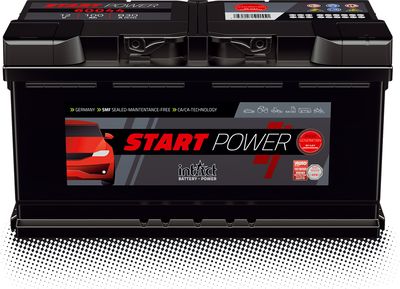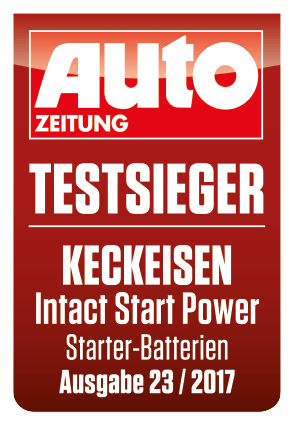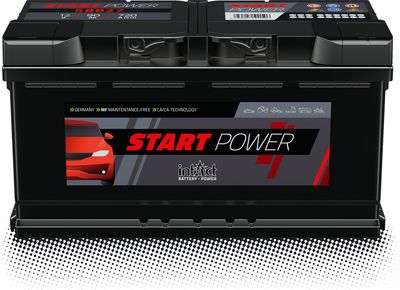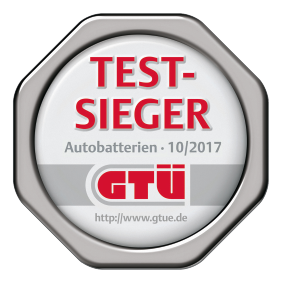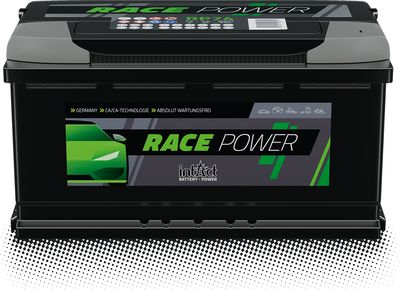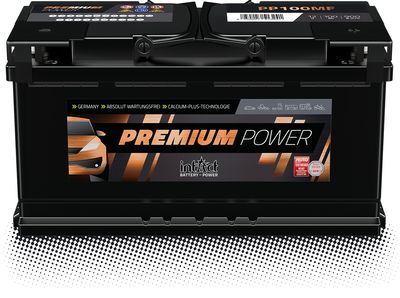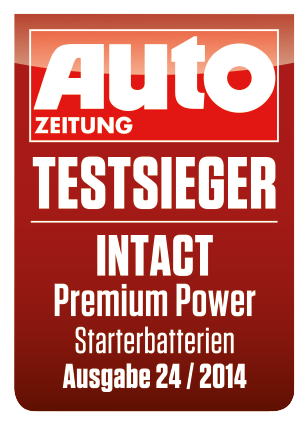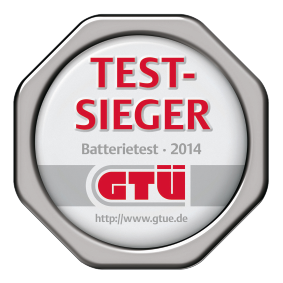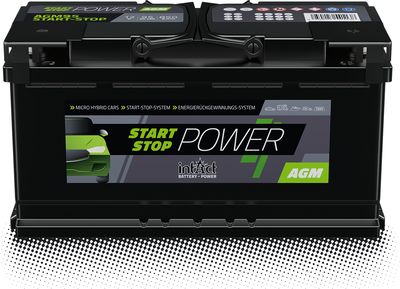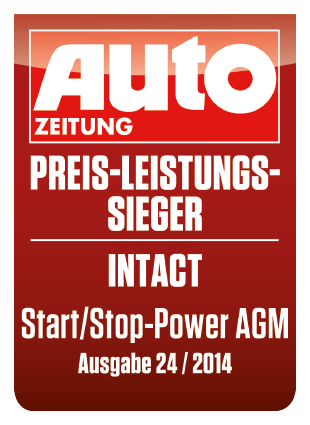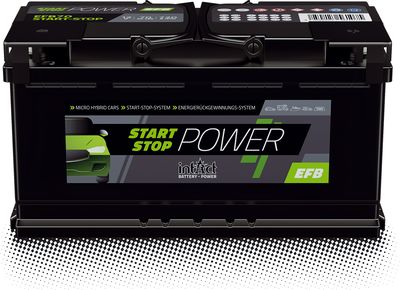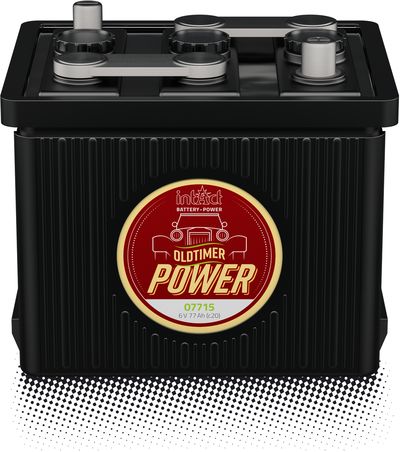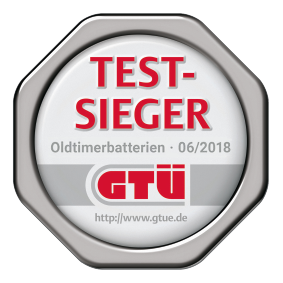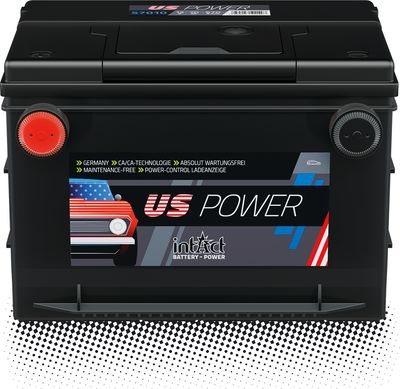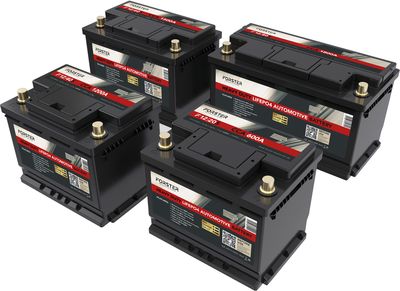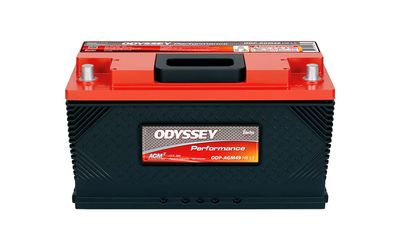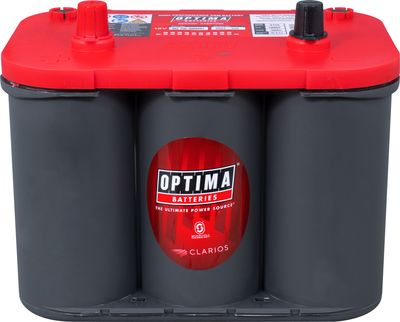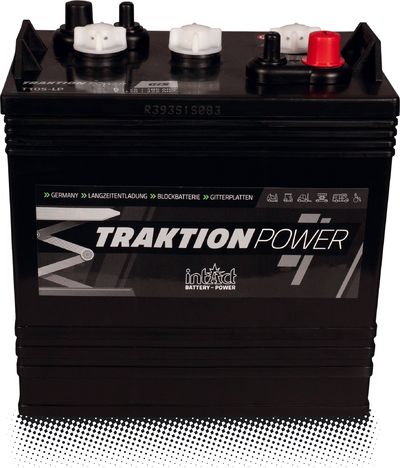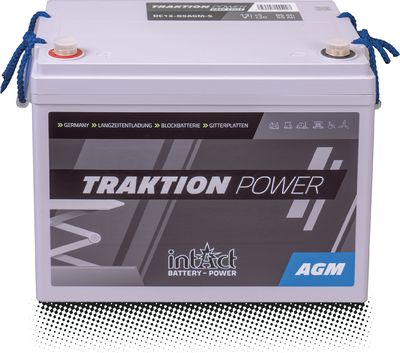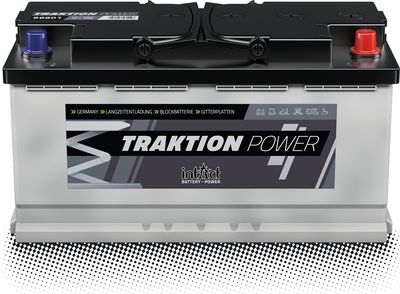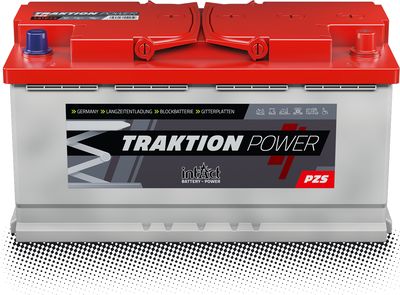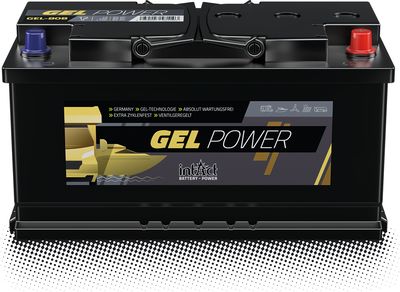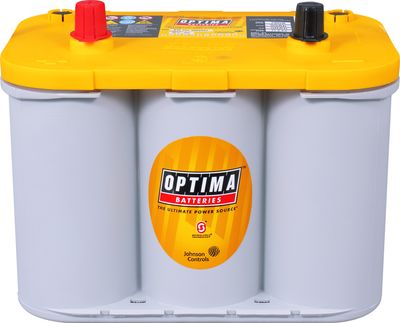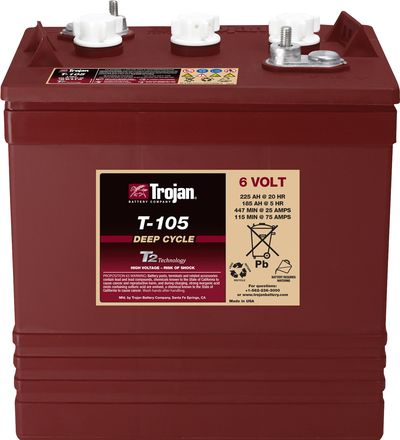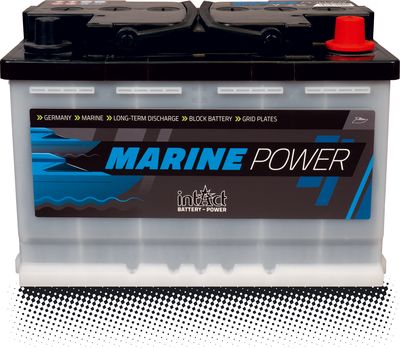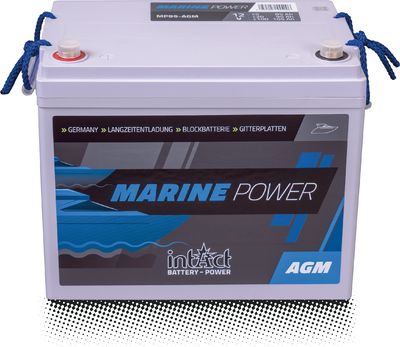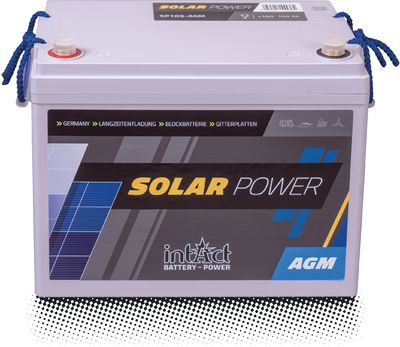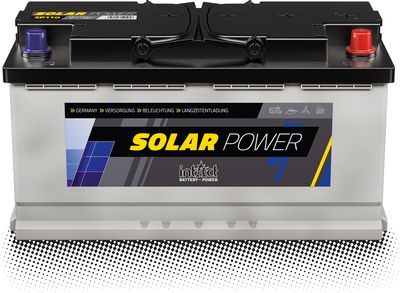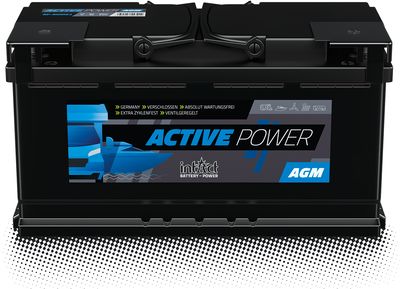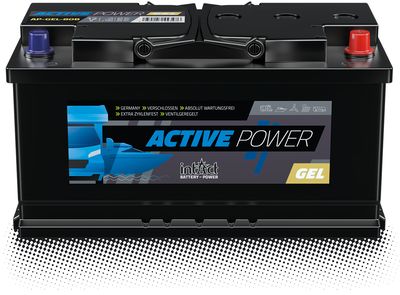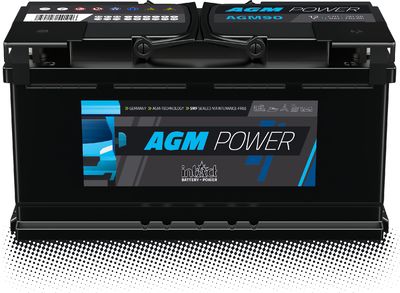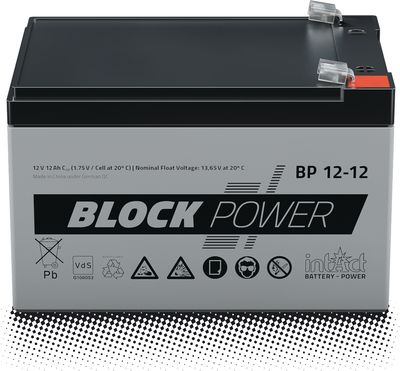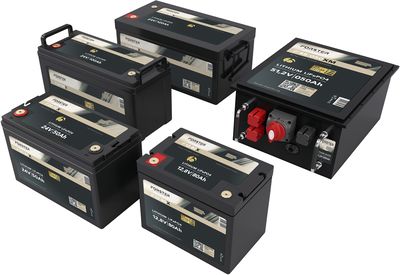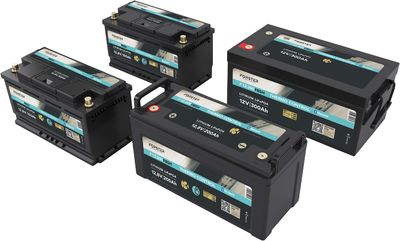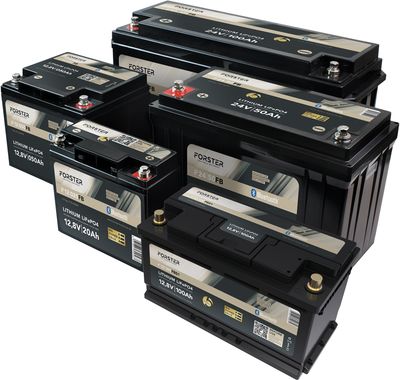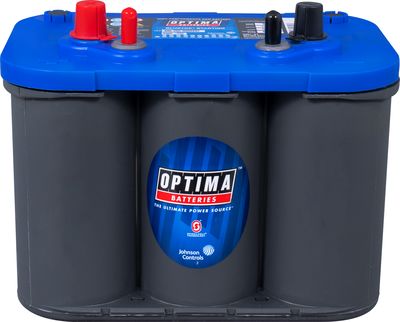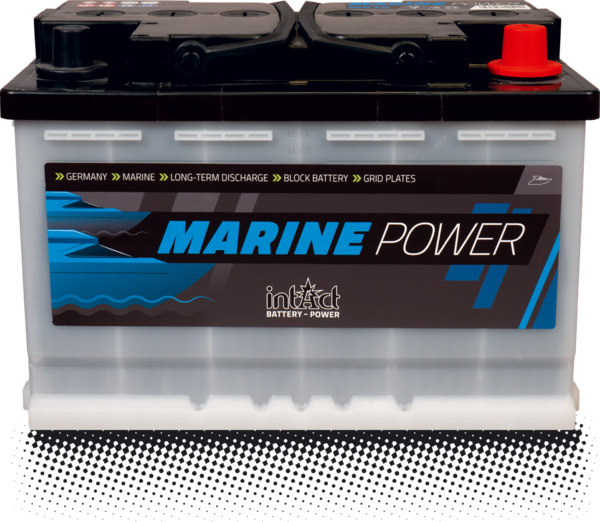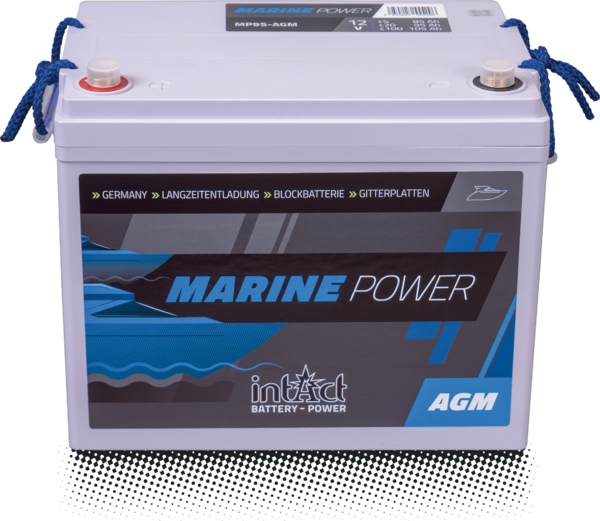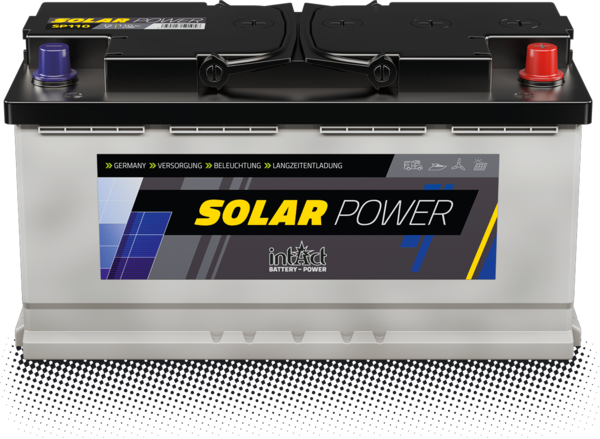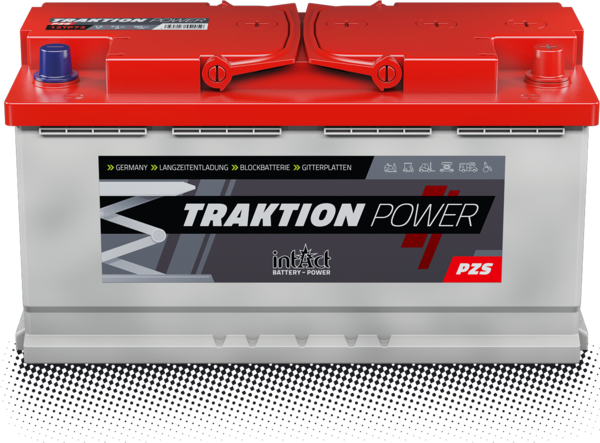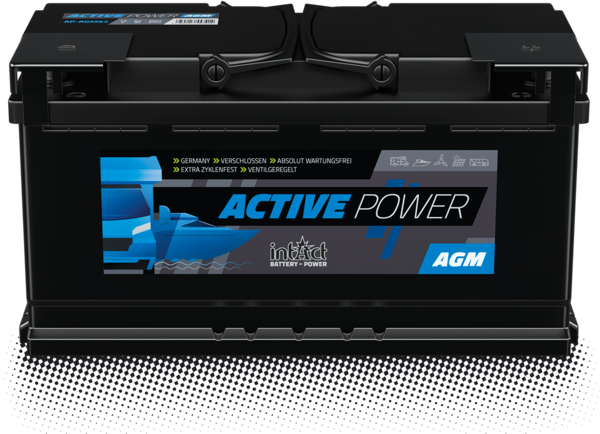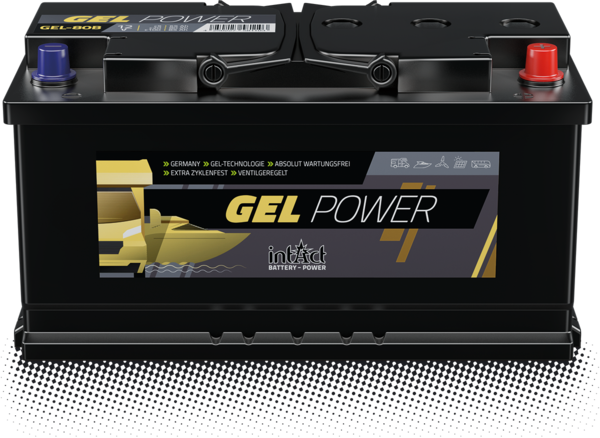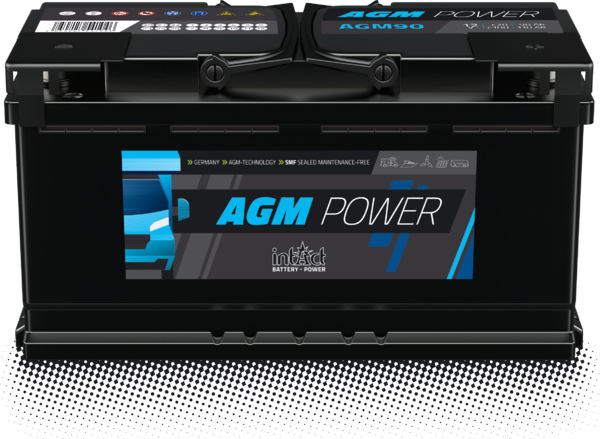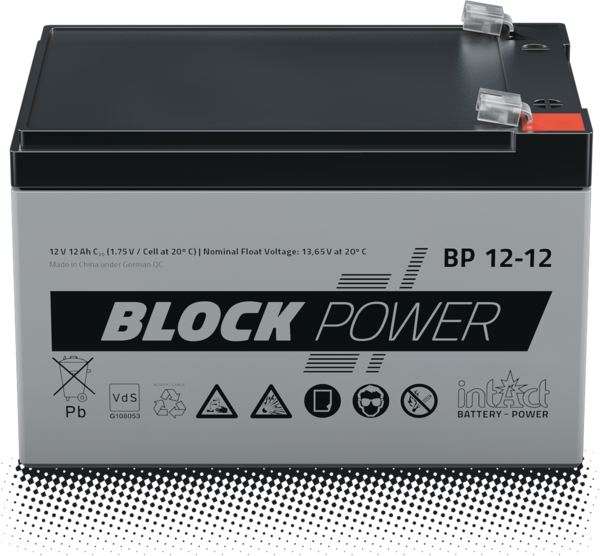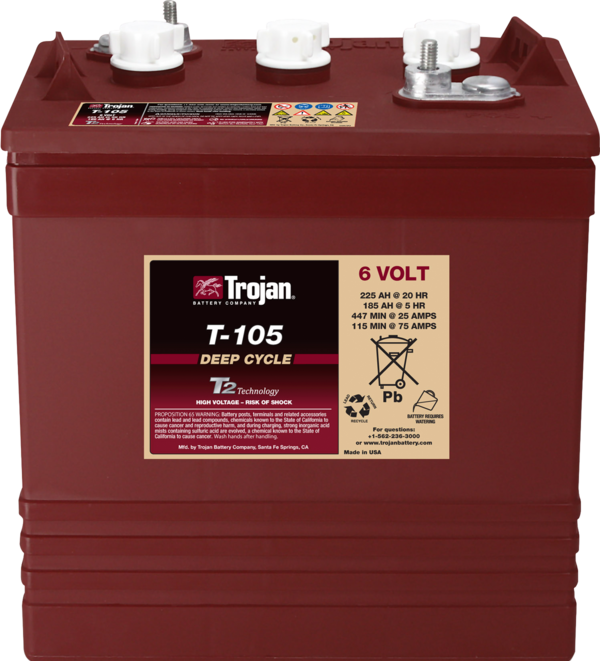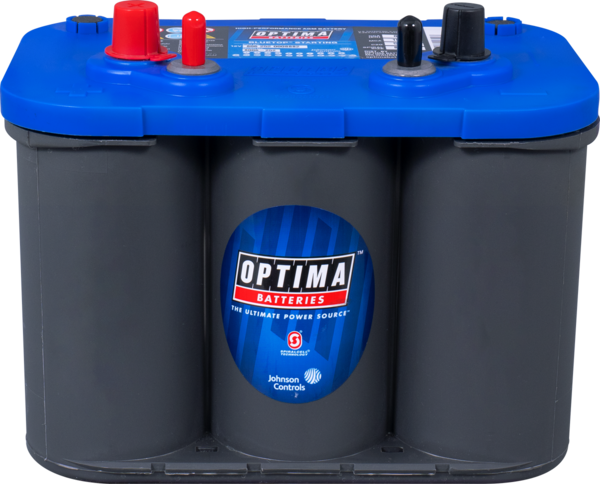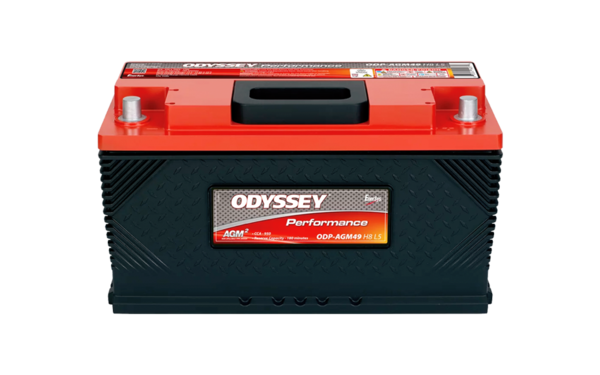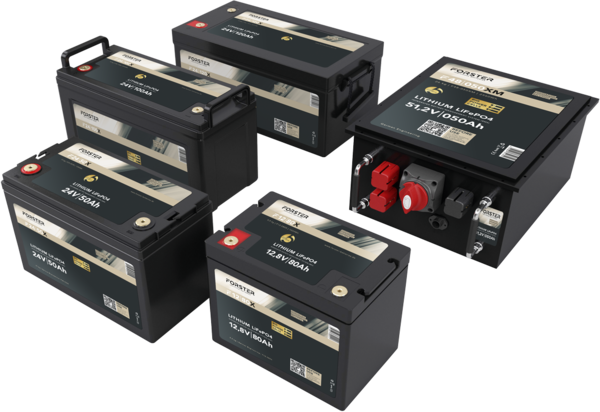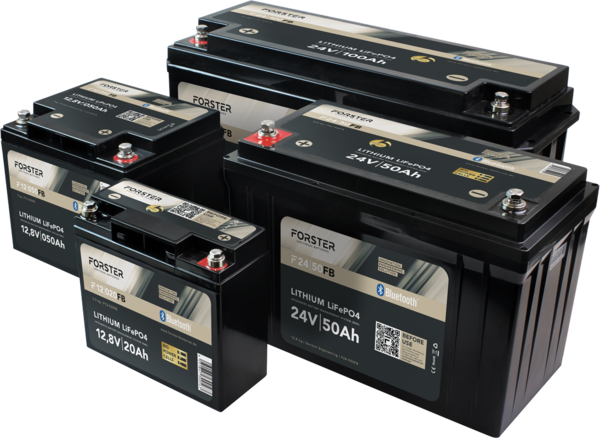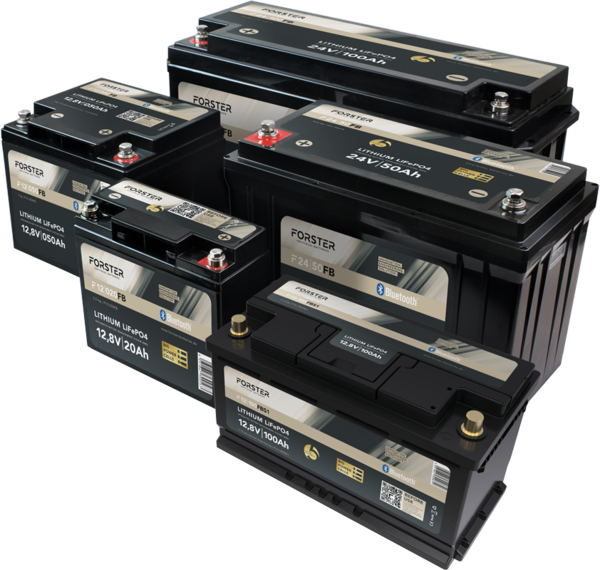Capacity and performance of lithium iron phosphate batteries are very high compared to other batteries of the same box size. An extremely long service-life, low self-discharge rates, and toleration for highest charging currents are some of the compelling features. To fully charge them, a smaller PV system is sufficient, as for charging a lead-acid battery of comparable capacity and it is faster. Hence, they are particularly suitable for camping as well as boating applications.
Always well supplied
In buses or motor homes, supply batteries ensure that large consumers such as refrigerators or auxiliary heaters are supplied with power without putting a strain on the starter battery. They are also excellent storage media for energy from small solar plants or wind turbines, for example, and in UPSs they maintain the power supply for system-critical consumers in the event of a power failure.
Buying advice for your supply battery!
What is a supply battery?
Supply batteries must provide power for as long as possible for consumers that are not connected to the regular power grid or the starter battery. Either in mobile applications, e.g. camping or in island installations such as mountain huts, or in safety applications when the normal power grid fails or to compensate for so-called mains wipers. Depending on the application, they are charged with a charger from the mains or via smaller photovoltaic or wind power systems.
So not only do they have to supply power for a long time and then take it up again well, but they also have to cope well with changing current levels and voltages.
Supply batteries are cyclic batteries, i.e. they are designed to continuously deliver current up to a maximum depth of discharge of 80% when supplying electrical consumers and then to be fully recharged again. In contrast, a starter battery delivers a short, strong current surge for starting the engine and is recharged by the alternator while driving.
What are the different types of supply batteries?
Supply batteries are used in numerous applications:
Motorhome battery
A supply battery that is used in motorhomes or campers is also colloquially called a motorhome battery. Typically, it is charged with stationary charging current at the motorhome parking lot or via a solar system, because the alternator is not sufficient to supply the necessary current. More info on charging can be found below. As batteries can leak gases during normal operation, we recommend not to install the battery in the living area if possible or to use a sealed battery with safety valve, which causes almost no gases, like the intAct Active-Power AGM or the intAct Active-Power GEL. Depending on where the journey is to go, it makes sense to choose a battery that is particularly temperature-resistant, such as the Odyssey supply batteries, which also perform well in heat or cold.
Solar battery
Supply batteries that can be used as temporary storage for photovoltaic (PV) or small wind systems are highly cycle-resistant, which means they can withstand different charging cycles well. In the renewable energy sector, charging cannot be done with a regular current, but the battery has to absorb the current according to the changing conditions of wind and sun. The intAct Solar-Power is perfectly suitable for intermediate storage in motorhomes and camping areas as well as small island systems in temporary used cabins or holiday homes.
Power storage systems for private households or the commercial sector require larger capacities. We offer correspondingly designed solutions consisting of battery cells and charge controllers through our industrial battery division inbatt.
UPS battery
These block batteries provide an uninterruptible power supply (UPS) for cash register systems or smaller computer systems as well as security systems such as locking systems or security lighting when the mains power fails. UPS systems also protect the connected loads from damage or data loss due to mains fluctuations or mains surges. In addition to directly applicable block batteries such as the intAct Block-Power, individually configured battery systems are used for larger systems with high power requirements or special safety requirements. Our industrial division inbatt has the corresponding approval for the high-security sector to offer this solution in a custom-fit manner.
Further areas of application
In addition to the areas mentioned, supply batteries are suitable for supplying almost all electrical consumers independent of a stationary power grid (household, public places, generator, etc.), as well as independent of an on-board network supplied by a starter battery or alternator. They supply refrigerators or heating systems, hi-fi, video, light and sound systems, navigation devices, security systems and control systems and charge connected small devices such as smartphones. They are used in coaches, long-distance buses, truck cabs, on boats with petrol or electric engines, in the great outdoors when camping or hiking and in many other areas.
Tips for buying a supply battery
We have selected all batteries in our supply battery category to be very suitable for supply applications.
But even within this category there are differences, which we go into detail here to help you choose the battery that suits you best.
The choice of the right battery depends on
1. the technical data and
2. the individual requirements for a battery suitable for your individual application.
1. The technical data
Every battery loses power over time.
If it is loaded normally and is always fully charged, the capacity is slowly reduced.
If it is often overloaded and insufficiently charged, the capacity is reduced much more quickly, i.e. the battery ages much faster.
Ideally, current drain (load) and current consumption (charge) should be in balance. This prevents the battery from ageing prematurely.
In the case of supply batteries, this means above all that they must be designed large enough to supply the connected loads for as long as desired or as necessary without going into deep discharge.
In the case of infrequently used batteries and those in UPS systems, the self-discharge rate is also important, as is the selection of a suitable charger in order to keep the state of charge or readiness of the battery and wear or ageing in balance during the frequent charging processes.
In order to weigh this up sensibly, the following technical data play a role:
Nominal capacity in Ah
To make your battery work as planned, you should first decide how many loads you want to power with your battery and how long you want to run it before you want to or can charge it again.
How much current and what voltage do your loads require?
It is best to list all electrical consumers and determine the respective watts and volts required for operation using the operating instructions or labels.
Now you first add up the currents of all consumers of the same voltage. And then determine the current requirement in amperes:
I (current in amperes) = P (power in watts) : U (voltage in volts)
How long do you want to use them before you charge them again?
The issue here is purely one of operating time. A refrigerator that runs continuously is different from a sound system that makes 10-minute announcements several times a day before recharging at night.
The previously determined ampere value multiplied by the planned usage time in hours results in the required nominal capacity in Ah. To be on the safe side, this value should be multiplied by a factor of 1.3 to avoid discharging the battery unnecessarily deep.
Ah (nominal capacity in ampere-hours) = I (current in amperes) x planned time of use under full load (in hours) x 1.3 (safety factor)
Some advisors recommend instead to use the value in watt hours as a basis for calculating the suitable battery. Since all the data has already been determined, this value can be easily determined:
Wh (power in watt-hours) = Ah (nominal capacity in amp-hours) x U (voltage in volts)
In photovoltaic or wind power systems beyond camping or leisure applications, the necessary capacity is not determined by the power consumption by the consumers, but by the amount of electricity generated by the system and which is to be stored for later use. Our inbatt sales team will be happy to design batteries for this purpose for you.
Cycle stability
For our traction and supply batteries, the cycles are specified according to IEC 254-1. They state how often the battery can be discharged to a depth of discharge of 80 % and recharged under ideal circumstances without suffering damage.
If the battery is regularly discharged less deeply, it will last correspondingly more cycles.
In applications where not much current is drawn at a time before recharging, batteries for light cyclic loads are sufficient, such as the intAct Solar-Power, the Optima Yellowtop or the Odyssey traction batteries.
If the battery regularly reaches its limits, is often deeply discharged, possibly also because the time for recharging is not always sufficient, batteries for heavy cyclic use with up to 1,000 cycles such as the intAct Traction-Power PzS or the intAct Lithium-Power with 3,500 cycles up to a discharge depth of 100 % are suitable.
In between are batteries like the intAct GEL-Power and the Trojan Deep-Cycle for the medium cyclic range with up to 700 cycles.
Installation dimensions and terminals
A battery must of course fit in your vehicle, machine or device. Check the dimensions of your old battery or the available space where you want to install the battery.
Check that the terminals are easily accessible, that you can reach them easily with the existing cables and that the connections of your cables fit the battery.
Some batteries have a base plate that you can use to secure them if you have the space.
Tipp
You don't have to stick with the original technology.
An upgrade is always possible!
2. Your individual requirements for a battery suitable for your individual purpose of use
Supply batteries come in different designs. There are AGM batteries with flat grid plates or wound grids (round cell batteries), GEL batteries and wet lead acid batteries with grid plates or armored plates or tubular plates.
Each battery technology has particular strengths, but also weaknesses. Depending on the requirements your battery has to meet in the respective application, or which properties you want, some battery technologies are more suitable or less suitable.
It is important to weigh up the properties.
How are you going to charge your battery?
Via the on-board system or the alternator?
This will only be possible with very small batteries, because the alternator normally only supplies enough current to make the starter battery ready again for the next starting process.
Briefly in between on long journeys far away from civilization
If you want to restore the charge of your battery quickly, you need an AGM-based battery that can withstand fast charging well and can be charged with a more powerful charger. The Odyssey batteries also have a good recharge behavior, i.e. even if they still contain a relatively large amount of current, the current consumption is good.
You can find out more about the recharging behavior and the phases in which chargers normally charge batteries in our knowledge article on charging characteristics for the various battery technologies.
Overnight from the mains at home or at the motorhome site
If you have enough time to recharge, GEL batteries like the intAct GEL-Power are the best choice for medium cyclic applications and armor plate batteries like the intAct Traktion-Power PzS for heavy cyclic applications.
With solar or wind power?
If you're not travelling in perfect climates, charging with a mobile solar or wind system means making the most of every ray of sunshine or gust of wind. Lithium batteries such as the intAct Lithium-Power recharge comparatively quickly even with a small system.
When things get tight
If you don't know when you can charge your battery next time and want to supply your consumers until the end, your only option is a lithium battery like the intAct Lithium-Power, which can be discharged to 100 % depth of discharge without damage.
Permanently connected to the mains, e.g. installed in a UPS system.
Batteries that are to be permanently connected to the mains in order to be quickly available in an emergency or for spontaneous trips should be able to withstand trickle charging or constant charging.
Is it important that the battery can be tilted and not leak?
Vehicles and devices with electric motors can also fall over. Leaking battery acid can damage the motor or the housing. The battery will also be damaged if the grids are not covered with electrolyte.
Flooded batteries like the intAct Traktion-Power PzS need regular maintenance and have vent caps or a lid that can be removed. They can only be used upright and will normally leak immediately if tipped.
Sealed GEL or AGM based batteries like the intAct GEL-Power or the Odyssey batteries cannot be opened. They have a safety valve and are also called VRLA batteries (Valve Regulated Lead Acid). They survive a rollover but should not be installed permanently tilted.
If it is important to you to install your battery in any position, we recommend the intAct Lithium-Power.
Is there a risk of your battery getting wet?
Ideally, batteries should be kept dry. Even slight moisture can promote leakage currents.
If you've noticed condensation on your battery frequently in the past, such as with temperature fluctuations, or water can get to your battery, it's worth considering a splash-proof battery.
Whether and what protection a battery offers against dust and water is indicated by the protection class according to the IP code.
Many types of our intAct Bike-Power Lithium motorcycle battery and the intAct Lithium-Power supply battery are splash-proof and jet-proof or even waterproof. You can find the exact specifications for each type.
Will your battery not be used for a long time?
Many vehicles, devices or machines are only used seasonally or on certain occasions. Ideally, your battery should be ready whenever you need it. That's why we recommend that batteries are always fully charged, stored at approx. 15 to 18° C and dry, and disconnected from consumers during longer periods of standstill. But even with these precautions, the battery loses voltage over time.
To counteract self-discharge, it makes sense to charge the battery with a charger every 6 to 8 weeks. There are also chargers that can remain permanently connected to the battery and constantly recharge it slightly. However, this is at the expense of the battery's service life.
Or you use a GEL battery like the intAct GEL-Power which has a lower self-discharge than batteries with other technologies.
You don't like maintenance?
With low-maintenance batteries, you should regularly check the fluid level and refill with distilled water if necessary. You can recognize them by the plugs on the top, as with the Trojan Deep-Cycle flooded battery.
With an optional water filling system, the battery fetches the lost fluid itself and the service intervals are extended.
If you want to save yourself even more work, we recommend that you choose a completely maintenance-free battery that requires no maintenance whatsoever.
Absolutely maintenance-free batteries are available on AGM or GEL basis. both are sealed and equipped with a pressure relief valve. They are also called VRLA batteries, i.e. valve-regulated lead-acid batteries. Here no liquid is lost. In the AGM battery, the electrolyte is bound in the glass fibre separators, in the GEL battery it is fixed in a gel-like manner.
